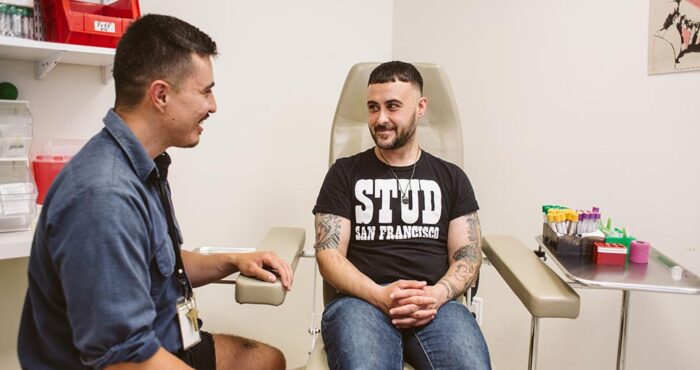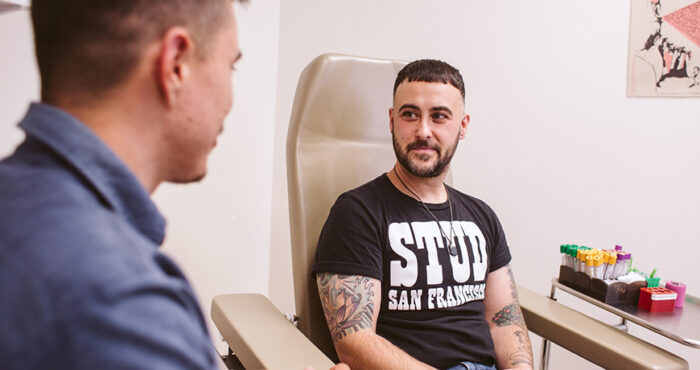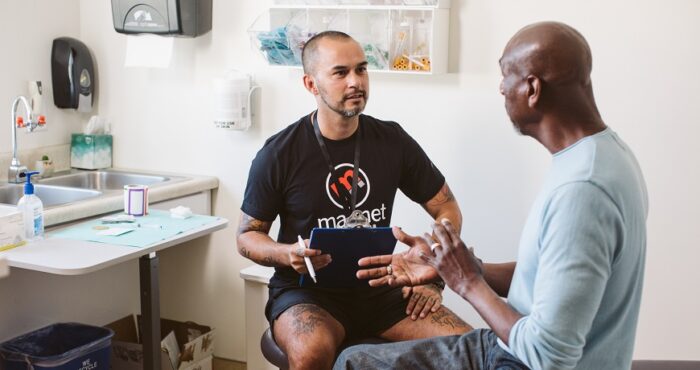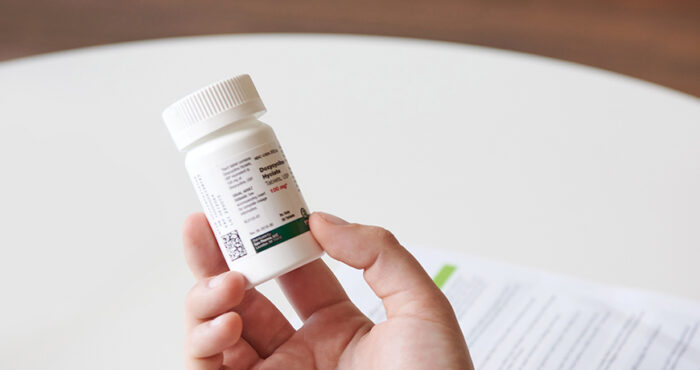Status check: PrEP uptake & delivery
In the U.S., the CDC estimates that more than one million people (1,232,000) are at sufficient risk for HIV to meet PrEP prescribing guidelines. This stands in stark contrast to the most recent estimate of approximately 120,000 people currently taking PrEP (based on pharmacy data) by the first quarter of 2017. How are public health and community health organizations creating demand and facilitating access to PrEP—and what more can be done?
Kenneth Mayer, MD, medical research director and co-chair of The Fenway Institute, joined BETA to answer questions about the opportunities to expand PrEP access in the U.S., and explain findings from his recent review on the subject published in JAIDS.
BETA: Why is it important to have a good understanding of how PrEP is being used (or not used) by different communities?
Kenneth Mayer, MD: We know that PrEP works. We have something that can protect people from HIV, but when it comes to implementation, the question now is: Is the glass 1/10 full or 90% empty? We might have more than 10% of people who are at risk for HIV taking PrEP, but we certainly don’t have more than 20% right now.
There’s also data to suggest maldistribution of PrEP. The epidemic is disproportionately affecting African Americans and other people of color, but the relative rates of PrEP uptake are lower than they are for white people. Uptake of PrEP among women is certainly less. Even among men who have sex with men [MSM], there’s still substantial underutilization. PrEP can slow down the HIV epidemic, but it’s not being implemented as widely as it might be. That’s what led us to do this review.
You mentioned the “maldistribution” of PrEP, which is an issue many organizations and people working in HIV prevention want to address. What are some examples of strategies used to better reach people who may not be accessing PrEP because they’re marginalized from the healthcare system?
Anything you can do to promote awareness and reduce barriers to PrEP is going to be useful. In terms of increasing awareness, I know that the New York City public health department has been a leader. They implemented a large, sex-positive community-based education and awareness campaign that promotes PrEP for HIV-uninfected people and HIV treatment for people living with HIV. Campaign ads ran on city busses, on transit shelters, on social media, and in other places.
In terms of minimizing barriers, programs that allow people to access PrEP through pharmacies have been beneficial. People already go to pharmacies to get flu shots or hypertension monitoring. As long as there is renal [kidney] function monitoring, it’s certainly a safe medication to deliver through pharmacists.
PrEP navigators are another way to decrease barriers to PrEP. At a place like Fenway Health, there are probably more than 100 ways that people pay for PrEP. It can be bewildering for professional staff, let alone for people in the community. PrEP navigators help people navigate the insurance and patient assistance system, and figure out how to pay for PrEP.
If you could wave a magic wand and change one thing about the delivery of health care in this country that would improve PrEP uptake, what would that be?
I would transform our fragmented health care system into a single-payer model. Right now, there are disincentives for health insurance companies to pay for PrEP and to offer other preventative health care services. A person who may benefit from these preventative health care interventions may not be insured by the same payer in a few years, so insurers are sort taking the approach of ‘kicking the can down the road.’ With a single-payer system, it would make economic sense to make sure everyone at risk for HIV has good access to PrEP, in order to prevent costly HIV infections that would require triple therapy for life.
Your review highlights the fact that Black women account for two-thirds of new HIV infections in American women, but that PrEP uptake has been slow in this community. What are some of the challenges here, and what might be a solution?
One of the issues is that for Black women in the U.S. is that the mean number of recent sex partners is about 1.1 or 1.2. In other words, there are a small number of women who engage in sex work or have more partners, but the majority of women are serial monogamists. They may not feel they are at risk for HIV, but they’re becoming HIV-infected through their partners, because their partners are either unaware of their status or do not disclose their status.
A no-brainer solution is to make sure that providers who take care of women coming in for reproductive health care, who present with STDs, are given information and access to PrEP. In a lot of cases, this conversation isn’t happening already, so even introducing that conversation into reproductive health care for Black women would be a huge step.
Another thing people are looking at is trying to figure out how to coach women to have conversations with their partners about HIV and risk. It’s important for women to feel that they have the agency to have these conversations with their partners, but a lot of times, there may be cases where there is violence or power dynamic imbalances when this isn’t feasible.
What do you see as the take-home message from your review of PrEP delivery in the U.S.?
I work with a number of young colleagues beginning federally-funded PrEP implementation projects in places across the country. We informally get together and talk about issues related to implementation, in places including St. Louis, Missouri; Jackson, Mississippi; Providence, Rhode Island; and here in Boston. We were able to get different “snapshots” about what is working and what is not working in each of these areas.
One of the things we looked at are the facilitators and barriers of delivering PrEP in different health care settings. For example, STD clinics are a logical place to provide PrEP since they’re seeing people who may be at risk for HIV. If somebody comes in with rectal gonorrhea, it makes sense for the STD clinic to be able to provide PrEP rather than having to refer that person to a PrEP clinic across time. But barriers include limited counseling time and the fact that STD clinics typically don’t offer continuous care.
Community health centers are almost the opposite of STD clinics. They’re used to providing comprehensive care, but a lot of clinicians aren’t trained in sexual health care. They may manage a person’s hypotension or diabetes, but not used to asking people who they have sex with and having nuanced conversations about PrEP.
I think the take-home from the paper is that if you don’t have an integrated health care system, there isn’t going to be one place that’s ideal for PrEP delivery. The epidemic is heterogeneous—what works in Jackson, Mississippi isn’t the same thing that will work in Seattle.
Source
Mayer, K.H. and colleagues. Evolving Models and Ongoing Challenges for HIV Preexposure Prophylaxis Implementation in the United States. JAIDS, Feb 2018.
Learn more about PrEP & find PrEP services
San Francisco AIDS Foundation offers free PrEP services at Strut (470 Castro Street in San Francisco) and at their main office (1035 Market Street in San Francisco). Find more information and make an appointment online.
Askaboutprep.org is a website with information about what PrEP is, how to access and afford PrEP, and San Francisco Bay Area clinics and prescribers.
PleasePrEPme.org is a website linking people seeking PrEP services to PrEP providers across the U.S. The site includes a searchable directory (by state, zip code or street address) for users to find PrEP clinics and PrEP clinicians with hours, contact information and health insurances accepted for each listing.
San Francisco City Clinic offers free and low-cost sexual health care to people in the Bay Area regardless of immigration or insurance status. They offer same-day PrEP enrollment during drop-in hours.
For trans people, San Francisco City Clinic offers PrEP services by appointment Thursdays from 8 am – 11 am or during the drop-in hours.
The CDC offers more info about PrEP and videos about this HIV prevention option.
Prep Facts provides FAQs about PrEP and other PrEP info.
—
San Francisco AIDS Foundation receives funding from corporate partners including those in the pharmaceutical industry. Editorial decisions on our blog and website are made independently. For more information about SFAF funding, please refer to our financial and tax documents.










